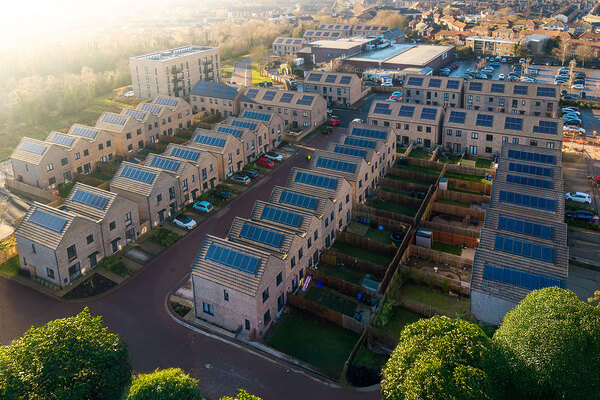The new biodiversity net gain requirement - better late than never
The UK is one of the world’s most nature depleted countries.
That’s a consequence of many factors including the industrial revolution, the way we’ve farmed and our extensive reliance on roads. But a significant step in fixing that problem was taken earlier this year with the coming into force of the Biodiversity Net Gain requirements of the Town and Country Planning Act 1990.
These requirements are inserting into almost every new planning permission a standard biodiversity net gain condition. The condition requires the applicant to secure approval from the planners to a biodiversity gain plan before development commences. As part of preparing that plan, the applicant will make assessments of biodiversity value both before development is started and after it is completed. A 10% increase will need to be shown.
Biodiversity value is calculated using Natural England’s statutory biodiversity metric. This focusses on the amount and quality of habitats rather than actual presence of species. That’s on the assumption that, if habitats are provided, species will live there. And also, on the pragmatic view that it is easier to identify, quantify and specify habitats than it is to keep a running total of how many animals, birds and insects have moved in.
The Government is wise to the possibility of developers providing a lovely nature reserve within a housing estate as part of the initial build, only to have it tarmacked over for parking shortly after the first residents (and their cars) have moved in. So, habitat enhancements can only be taken into account if they are secured for 30 years. That will be achieved in almost all cases by including relevant obligations within section 106 (Planning) Agreements or Conservation Covenants.
Section 106 Agreements have been around for a long time. They are legally binding contracts made between landowners and the local planning authority. Their most fundamental feature is that they can bind not just the landowner who enters into them but, also, anyone else who subsequently owns that land in the future.
Conservations Covenants are new creations of the Environment Act 2021. As with section 106 Agreements they are legally binding contracts made by landowners. And again, as with section 106 Agreements, they can bind not just the landowner who enters into them, but also anyone who then owns that land in the future. Their principal difference is that rather than being with the local planning authority, they are made with a Responsible Body (as defined in the Act). The Secretary of State is a Responsible Body. In addition, local authorities or, subject to meeting certain requirements, others can apply to be registered by the Secretary of State as Responsible Bodies. So, for example, a nature focussed charity might become one.
The planning preference is for onsite enhancement of biodiversity. But the legislation acknowledges that this will not always be possible. So, it provides alternatives.
Enhancement to land elsewhere can be taken into account. One way of achieving that would be for a particular developer to acquire a particular piece of land and devise a particular habitat enhancement project and then covenant to maintain that project by way of a section 106 Agreement or Conservation Covenant.
It’s acknowledged that that may be quite fiddly and so the legislation creates a structure which, it is hoped, will create a market for what are called Biodiversity Units. Landowners will be able to devise habitat projects on their land, calculate the additional biodiversity gain those create and convert that into Biodiversity Units, which can then be sold to developers to offset any shortfall on a particular development.
Finally, there is a concept of Biodiversity Credits, sold by Government. These are intended as a last resort, where a developer can’t themselves achieve the necessary gain and can’t find sufficient Biodiversity Units to acquire. In those circumstances they can buy Credits from central Government.
So Ten Top Tips from us:
- Get up to speed: Developers need to get up to speed with the legislation and understand how the obligations in section 106 Agreements and Conservation Covenants work. Where they are entering into such agreements, they’ll need to be mindful of the fact that what they agree now will bind the land for at least the next 30 years
- Control and influence: Those buying from developers by way of forward funding agreements need to ensure their agreements with the developers give them control (or at least sufficient influence) on how the BNG requirement will be fulfilled as, as future owner of the land, they may be the ones delivering the habitat gain for the next three decades
- A covenant for life: Anyone buying property going forward will need to check for what obligations they may be taking on under section 106 Agreements and Conservation Covenants. Their funders will need to be happy too
- Opportunity knocks: Local Authorities, RPs and other large landowners should be considering the opportunity here. If they can devise habitat enhancement schemes on their own land, they may be able to both deliver for the environment and make some money at the same time
- In the beginning: Landscaping and ecology requirements should be considered at the outset of the development process to see whether BNG can be accommodated on site whilst still making the scheme viable. Early engagement with local planning authorities (who are also still getting to grips with the concept themselves) is advised
- Marry an Ecologist: The demand for Ecologists is skyrocketing. They’ve become a scarce commodity. Developers, landowners and LPAs all need them for advice. So, in any project, make sure you get them on board as soon as possible. Otherwise, you may face delays at the last moment whilst you try to locate one with space in their calendar
- Overgrown or home sweet home: If you are looking to buy an overgrown and derelict industrial site for a bit of brownfield development, don’t assume that it starts with a zero biodiversity value. The clue is in the term ‘overgrown’. You may find that the site is home to a surprising range of habitat – and you’ll not only need to re-provide habitat of equal value, you’ll need to do better
- In addition, not instead: Remember that the BNG requirements are in addition to the existing laws and regulations protecting nature, not instead of them. You’ll still need to take care of protected species and you’re still not allowed to cut down a tree covered by a Tree Preservation Order
- Nature reserve v site compound: Don’t forget the development phase. The process of measuring biodiversity value before development starts and after it completes gives rise to a risk that you will forget the development phase. If your site has a small field at the back that you intend, post development, to retain as a ‘nature reserve’ be careful to make sure that your contractor hasn’t earmarked it as the perfect place for their site compound
- Look on the bright side of life: Homeowners and workers like nature. This legal requirement is a real opportunity to create amazing places to live and work in harmony with a bit of nature. If done right, that will help drive property values and build brand loyalty.
Hannah Langford is a partner and Neil Toner a senior consultant at Devonshires Solicitors LLP





